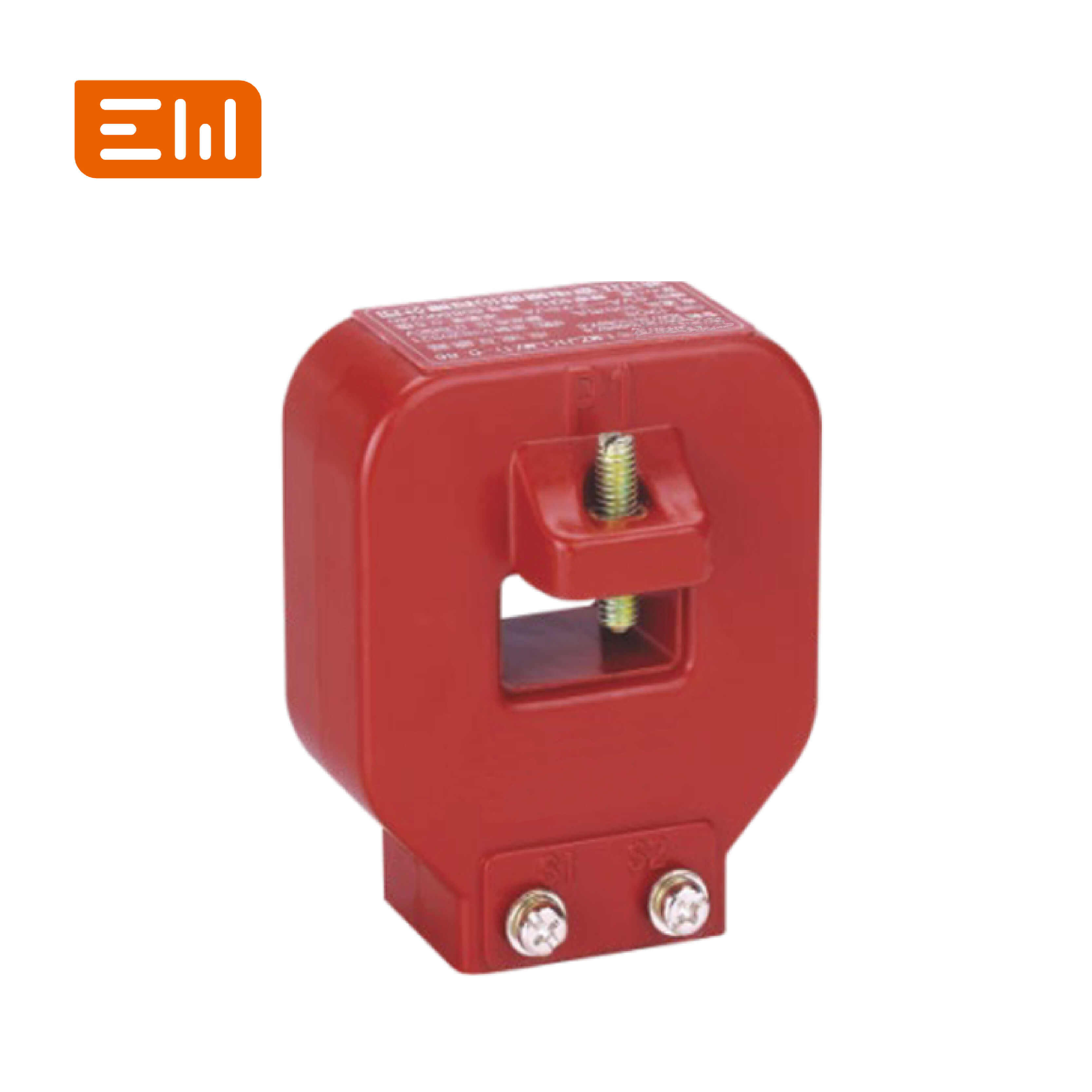Electrical Current Transformer Fundamentals for Precision Measurement
Electrical current transformers (CTs) are the backbone of protective relaying and revenue-grade metering. They scale high currents down to manageable values, preserving proportionality and phase relationships for measurement devices. As grids become smarter and fault levels rise, CT design must balance accuracy, saturation limits, and insulation strength.
Quick Definition: An electrical current transformer is a device that reproduces primary current at a reduced, standardized secondary current (commonly 1 A or 5 A) while maintaining proportionality and phase fidelity for measurement or protection equipment.
Key Project Takeaways
- Electrical current transformers follow IEC 61869-2 and IEEE C57.13 standards for accuracy and safety.
- Core material, window size, and burden determine CT performance under normal and fault conditions.
- Enwei Electric manufactures medium- and low-voltage CTs tailored for protection, metering, and digital integration.
- External references from IEC, IEEE, and NERC inform specification and compliance efforts.
Why Electrical Current Transformers Are Under Scrutiny
Modern power systems integrate renewables, distributed generation, and large variable frequency drives. These changes introduce harmonic currents and transient events that challenge CT accuracy. Protection engineers need CTs that avoid saturation during faults, while energy managers demand revenue-grade precision for billing and load management.
Cyber-physical security considerations also require CTs with tamper-resistant enclosures and digital outputs compatible with automation platforms. Utilities and industrial operators are upgrading to CTs with improved insulation, better accuracy classes, and built-in diagnostics.
Operating Principles of Electrical Current Transformers
Electrical current transformers operate on the principle of electromagnetic induction. Primary conductors pass through the CT core, creating magnetic flux proportional to the current. Secondary windings generate reduced current that mirrors the primary waveform when the CT is loaded with its rated burden.
Saturation occurs when magnetic flux exceeds core capacity, leading to distorted secondary current and relay misoperation. Selecting appropriate core materials—such as grain-oriented silicon steel or nanocrystalline alloys—helps maintain linearity, especially for protection CTs facing high fault currents.
Standards and Accuracy Requirements
Specification teams should closely follow international standards:
- IEC 61869-2:2012 — Defines requirements for current transformers, including accuracy classes, thermal limits, and insulation tests. Source: International Electrotechnical Commission
- IEEE C57.13-2016 — Provides standard requirements for instrument transformers in North America. Source: IEEE Standards Association
- NERC PRC-005 — Covers protection system maintenance, including CT testing intervals. Source: North American Electric Reliability Corporation
These references ensure CTs deliver both accuracy and safety across various grid environments.
Design Comparison Table
| Design Aspect | Protection CT Guidance | Metering CT Guidance |
|---|---|---|
| Accuracy Class | 5P/10P or TPX/TPY for high-fault conditions | Class 0.2 or 0.3 for revenue-grade measurement |
| Knee-Point Voltage | High knee-point to avoid saturation during faults | Moderate knee-point sufficient for steady-state accuracy |
| Burden | Sized for relay inputs plus wiring at minimal VA | Optimized for metering circuits with certified burden |
| Core Material | Grain-oriented or nanocrystalline for transient response | Silicon steel with focused accuracy over 5–120 % current |
| Output | 5 A or digital IEC 61850-9-2 LE streams | 1 A, 5 A, or low-burden milliamp outputs for smart meters |
Application Scenarios
Substation protection: Requires high-accuracy CTs that sustain fault currents without saturation so differential and distance relays operate correctly.
Industrial metering: Relies on compact CTs with removable cores that fit around busbars inside LV switchgear, maintaining class 0.5S accuracy.
Renewable plants: Utilize CTs resistant to harmonics and rapid transients from inverter-based resources, often integrating digital outputs.
Commercial buildings: Deploy split-core CTs in retrofit projects to monitor energy consumption without service interruption.
Integrating CTs into Power Systems
Electrical current transformers interface with protection relays, meters, and SCADA systems. Proper polarity marking and grounding are essential to prevent measurement errors. Engineers must calculate burden to ensure CTs operate within their accuracy class, considering wiring length, relay inputs, and auxiliary devices.
Digital substation projects may adopt non-conventional instrument transformers (NCITs) with fiber-optic or Rogowski elements. Enwei Electric supports both conventional and digital CT outputs to suit hybrid architectures.
Maintenance and Testing Strategies
Routine testing includes ratio verification, excitation tests, and burden assessments. Insulation resistance measurements detect moisture or degradation. Utilities often schedule CT maintenance according to NERC PRC-005 or utility-specific policies, ensuring reliable protection performance.
Infrared inspections and partial discharge monitoring can identify loose connections or insulation defects in medium-voltage CTs. Documented test results support compliance audits and continuous improvement.
Engineer Checklist
- Define CT purpose (protection, metering, or dual) and select appropriate accuracy class.
- Calculate burden including wiring, device inputs, and corrections for ambient temperature.
- Verify insulation level, thermal rating, and secondary grounding method.
- Plan for access during installation and maintenance, considering split-core or window designs.
- Coordinate CT selection with protection relay settings and metering requirements.
Enwei Electric Current Transformer Portfolio
Enwei Electric manufactures a full range of current transformers, from low-voltage models like LMZJ1-0.66 for panelboards to medium-voltage units such as LZZBJ9-35 and LZZBJW-40.5. Explore the product lineup at https://www.enweielectric.com/products/current-transformers. Complementary transformer solutions at https://www.enweielectric.com/products/transformers and switchgear options at https://www.enweielectric.com/products/switchgear ensure seamless integration.
Engineering FAQ on Electrical Current Transformers
Why do current transformers saturate?
CT saturation occurs when magnetic flux exceeds core capability, typically during high fault currents or excessive burden, causing waveform distortion and relay misoperation.
What accuracy class should I select for metering applications?
Revenue metering often requires class 0.2 or 0.2S CTs to maintain low measurement error across a wide current range.
How does Enwei Electric support CT projects?
Enwei Electric provides application engineering, product customization, and type-test documentation for CTs used in substations, industrial plants, and commercial facilities.
Call to Action: Deploy Precision CTs with Enwei Electric
Accurate electrical current transformers safeguard equipment and validate energy data. Partner with Enwei Electric to access certified CT designs, responsive engineering, and integrated distribution solutions. Contact Enwei Electric today to specify CTs tailored to your protection and metering needs.
Project Applications
See real-world deployment examples and gallery highlights across Enwei Electric product hubs:
- Transformer solutions for distribution and industrial projects.
- Switchgear portfolios covering medium- and low-voltage control rooms.
- Current transformer ranges supporting precision metering and protection.
- Prefabricated substations that integrate transformers, switchgear, and panels.
Table of Contents
- Electrical Current Transformer Fundamentals for Precision Measurement
- Key Project Takeaways
- Why Electrical Current Transformers Are Under Scrutiny
- Operating Principles of Electrical Current Transformers
- Standards and Accuracy Requirements
- Design Comparison Table
- Application Scenarios
- Integrating CTs into Power Systems
- Maintenance and Testing Strategies
- Engineer Checklist
- Enwei Electric Current Transformer Portfolio
- Engineering FAQ on Electrical Current Transformers
- Call to Action: Deploy Precision CTs with Enwei Electric
- Project Applications


